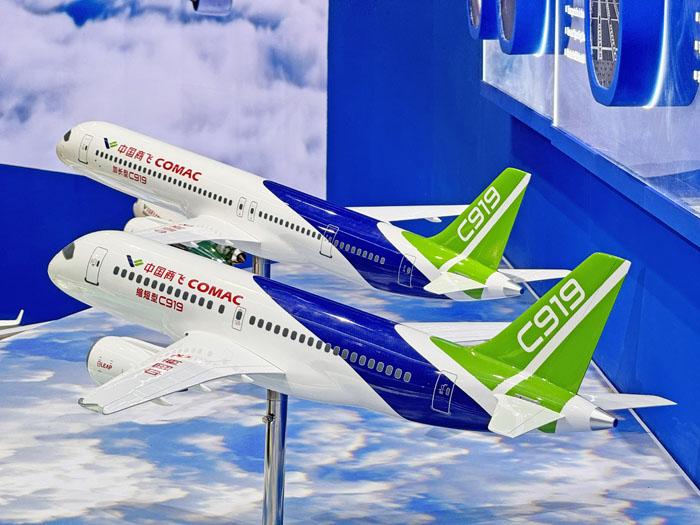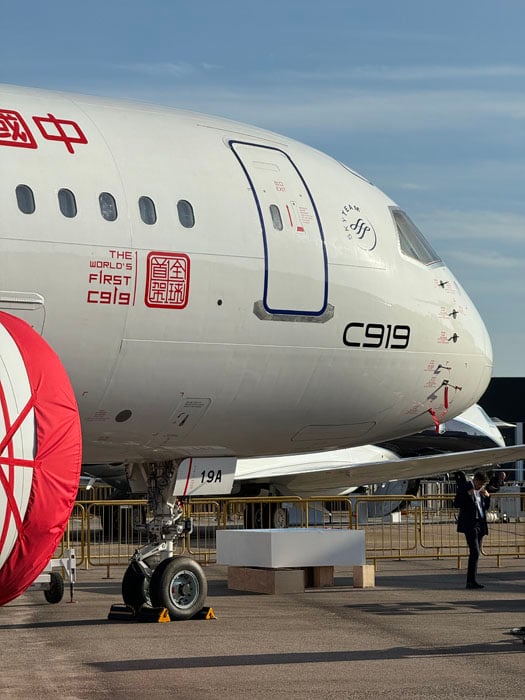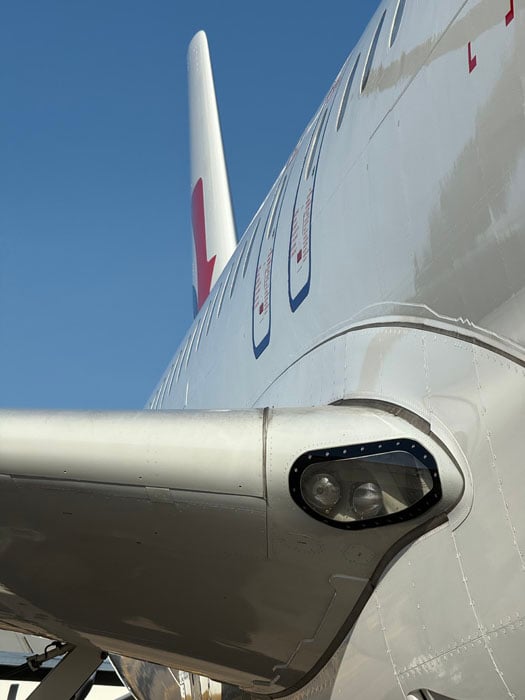
Models of Comac's stretched and shortened C919 variants are displayed on its Singapore Airshow stand.
SINGAPORE—China’s Comac has provided more details of the stretched and shortened variants of its C919 single-aisle family which were first unveiled late last year at the Shanghai International Commercial Aviation & Aerospace Industry Exhibition.
Additional insight into the new derivatives emerged at the Singapore Airshow where Comac signed an order agreement with Tibet Airlines for 40 of the shorter C919 model, which it refers to as the "Plateau" variant—after the high-altitude Tibetan plateau region bordering China and the Himalayas.
The shorter version is slightly smaller in average capacity to the Airbus A319neo and Boeing 737-7, sized for 140 passengers in a two-class layout. The aircraft will be optimized for typical plateau routes such as Lhasa to Chengdu with improved takeoff and landing performance. Lhasa Gongga International Airport is one of the highest in the world at an altitude of around 12,000 ft.
The stretched variant, which will be Comac’s equivalent of the A321neo and 737-10, is designed to carry “at least” 200 in a two-class layout, and up to 240 in a high-density arrangement, the aircraft manufacturer says. Geared for higher volume Asia-Pacific routes, the aircraft will be configured with additional mid-cabin emergency exit doors as well as dual over-wing upward hinging emergency exits.

Although the exact dimensions of the new variants have not yet been disclosed, the forward and aft fuselage sections of the shorter derivative are reduced by two and four frame lengths, respectively. The Plateau variant's center body has only a single overwing exit compared to the dual overwing exits of the 128-ft.-long standard fuselage variant.
The bulk of the stretched derivative is made up of a longer forward fuselage which is around 12 frames longer than the standard C919 forward fuselage section. The aft fuselage of the stretch appears to be largely unchanged except for the added mid-cabin emergency exit door.

Both new versions will retain the baseline C919 supercritical wing, which Comac says has 20% improved aerodynamic efficiency and 8% lower drag than a conventional wing without inverse camber. Although Comac originally intended to use carbon composites for the wing center box, the design was later simplified around a more conventional aluminum design.

External details of the nose-mounted air data and navigation sensors also show the C919 is configured with multiple angle-of-attack sensors, pitot and pitot-static probes, a flush static air data port, ice detector and antennas for reduced vertical separation minimum navigation.





